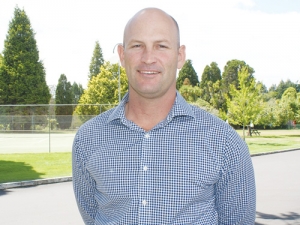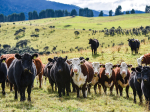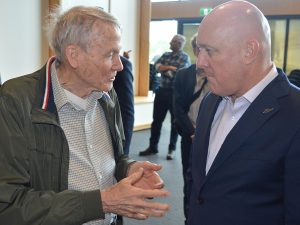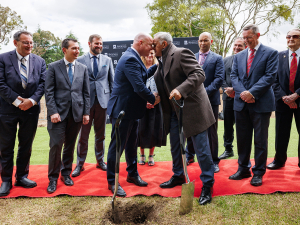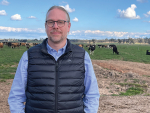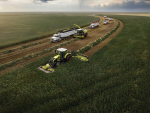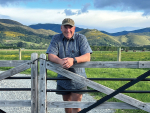An animal nutritionist is urging farmers to look deeper than body condition score for a true understanding of their cows' skeletons in assessing their health.
Factors underlying body condition score (BCS) must be understood, says Dr Joe McGrath, ruminant technical manager for Dutch nutrition company DSM. These will determine how long a cow will remain in a milking herd, McGrath says.
"That comes down to calcium, the key mineral that drives the mineral bus, yet not talked about as much as it needs to be, given how cheap and easily available it is," he says.
While working as senior lecturer in ruminant nutrition at the University of New England, McGrath researched the critical relationship between ruminant calcium levels and health.
"What is forgotten is that cows milk off their calcium rich skeletons, just like they milk off their backs. The problem is, that loss in their skeleton is impossible to see, and difficult to measure."
Even when she is optimally fed, a cow will be in a calcium deficit for six-nine weeks post calving, typically losing skeletal mass post calving, and regaining some of it back over the late lactation-dry period.
"If calcium is the building block of skeleton structure, then it also requires phosphorous as the 'mortar'. Basically, you need both in order to rebuild a skeleton successfully."
But absorption of calcium provided in her diet requires adequate levels of vitamin D, sourced from the sun.
However her vitamin D levels will be lowest over late winter spring, the same time her calcium demand is greatest, and stress levels highest.
Typically a cow's calcium levels in her skeleton will decline over time, and as she gets older each lactation risks leaving her with lower levels.
"A dead cow costs you nothing; it is the cows that have sub-clinical hypocalcaemia, often up to 50% of a herd, that cost you. This is linked to metritis, infertility, mastitis and assorted health issues."
A hypocalcaemic cow will typically end up in a downward health spiral, as her rumen slows down, she eats less, digests less, loses energy and has less immunity to infection and disease.
McGrath cautions while the skeleton is the cow's reservoir for calcium, she cannot be force fed calcium to top it up, requiring instead a constant "trickle" to maintain bone health.
Published data indicate that during early lactation a cow can lose between 0.3kg-1.5kg of calcium from her bone structure.
But her ability to get optimal levels of calcium and phosphorous out of the grass is compromised by modern grazing systems where she will harvest that grass at 22-25 days of growth.
"But a grass sward's ideal nutrient profile develops at about day 30-35 so that imbalance can't be made up by what she is taking in as pasture alone."
The implications for lactating dairy cows over several years is their calcium levels will decline, ultimately resulting in them leaving the herd too soon, on grounds of health or fertility problems resulting from depressed skeletal health.
Even excess calcium can be a problem in some areas, where it reduces magnesium absorption, in turn causing hypomagnesaemia issues.
McGrath says DSM had developed a product HyD, which is a next generation form of Vitamin D which is much more efficient, enabling her to better absorb calcium in her diet.
A cow's uptake of calcium and phosphorus from the diet can be compromised due to excess potassium, deficient magnesium or calcium and phosphorus imbalances. HyD mixed in her feed to ensure what calcium she was getting would be absorbed better thanks to HyD's unique mode of action.
"Using HyD enables the cow to absorb calcium and phosphorus better. Studies have shown inserting it into their diet can double the amount of Ca retained, and reduce the amount of bone degradation post calving."
While an additive may seem unnatural to some, McGrath said there was nothing natural about a high protein, 2-2.5 leaf rye grass plant in spring time.
HyD helped cows get through the challenges pastoral feeding presented at a stressful time for the animal. Similarly supplements like palm kernel, grains and maize silage were also low in calcium and offered little ability to lift levels.
McGrath urged farmers to look harder at the "macro" nutrients like Ca before the "micros", and at the value HyD can play in mobilising that valuable nutrient for health and milk production.
"Those mid-late lactation cows are in a bone building phase and robbing them of calcium means they will pay in the following lactation."

